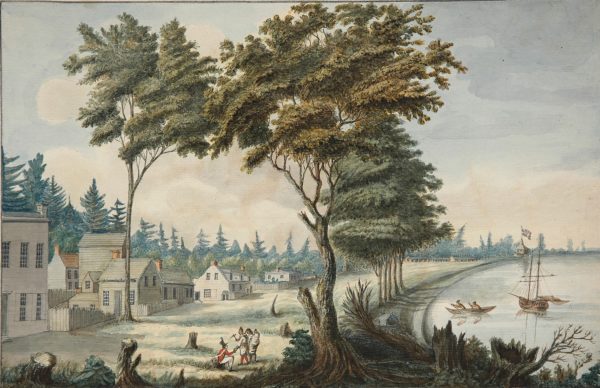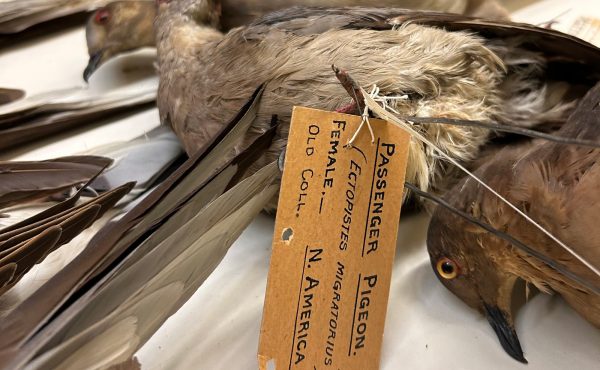The presence of Black children, women, and men who were enslaved in Upper Canada has been omitted from, or marginalized, in the Canadian historical narrative. Because of my years of research on slavery and freedom in Canada, particularly in what became Ontario, I see the glaring silences and disremembering of our history of chattel and the Black people who were held in hereditary bondage.
The erasure is evident in public markers –— street names, plaques, and other memorials — and the biographies dedicated to the Loyalist founders of the colony who comprised the enslaving class. I read their biographies and there are only passing comments of their slaveholding and participation in entrenching chattel slavery in custom and law or, most often, nothing at all is mentioned. Moreover, there are only a handful of biographies on the lives of the enslaved in colonial Ontario who were forced to migrate during and after the American Revolutionary War.
While there are hundreds of stories of enslaved Black people lost to history, there are many stories that have yet to and deserve to be told. In my ongoing effort reconstruct biographical narratives that offer glimpses into the lives of some of the over 600 Black people enslaved in this province, including what became the City of Toronto, I collaborated with Dictionary of Canadian Biography to publish a series of seven profiles:
This set of biographies represent a range of experiences, lives, and individuals under the chains of slavery. My research pieces together surviving archival fragments and, in some instances, existing secondary sources to craft stories that centre the enslaved as historical actors.
For over a decade, I have been conducting exhaustive research in the colonial archives in search of enslaved Black people, combing through all kinds of records — bills of sale, church records, wills, court documents, personal letters, military records, account books, and newspapers.
The enslaved did not produce written records and so my research process has involved delving into the preserved colonial archival records of enslavers and other white settlers. This work required me to become very well-versed in these records and acquire an in-depth knowledge of the white settlers who enslaved them in order to be able to locate the enslaved.
I traced enslavers back to their time in the Thirteen Colonies, their military service, their relocation to and settlement in Upper Canada, and their families. I have immersed myself in Loyalist history contained in records such as the Haldimand Papers, a variety of documents of Sir Frederick Haldimand, the Governor of the Province of Quebec (which at that time included present-day Ontario), and the Upper Canada Land Petitions. These records, among many others, are significant because the Loyalist exile to British North America led to the dramatic shift and growth in chattel slavery and the enslaved population. From about 1760 to the 1780s, the enslaved population in New France went from being about one-third Black (Indigenous people were the enslaved majority) to primarily Black under British rule.
Further, taxonomy and metadata pertaining to slavery in archival catalogues and finding aids are non-existent or very limited, so I had to sift through records page by page. Additionally, enslaved Black people tend to show up in the archives in a circumscribed way, recorded solely as property, reflecting their commodification and dehumanization. These are important considerations in how I approached the archives, how I read the documents I found, and how I analysed the facts I encounter for meaning.
To make an informed determination about the individuals in these DCB entries, it took a considerable amount of time to research and locate sources, as well as painstaking cross-referencing to try to verify the identity of the enslaved persons as much as is possible within the limitations of the slavery archives. In stitching scattered and disparate records into a coherent narrative, I reconstructed their stories in a deeper way by establishing historical context, expanding on social and political conditions, and stretching the archives to create layered stories from the scarcity of archival material.
The biographical profiles I’ve composed are intended to re-position enslaved Black people in Canadian history and reclaim their humanity by intentionally situating them as families and kin, teenagers, brothers, sisters, parents, spouses, women, men, and disabled.
Several of these biographies have close connections to the Town of York. The early boundaries of the Old Town, before the city was incorporated in 1834, were Queen Street on the north, Berkeley Street on the east, Front Street on the south, and Jarvis Street on the west. By 1800, the town’s population was 403; some of those enumerated were enslaved Black people. At least 15 Black persons held as property in this compact space were permanent residents of the town. Many others would have frequented the new capital accompanying their enslavers on their business.
For example, Peggy and her three children Jupiter, Milly, and Amy, were enslaved by provincial administrator Peter Russell. They resided on the Russell property at Sherbourne and Front. Peter Russell tried to broker the sale of Peggy and Jupiter to Mohawk chief Joseph Brant through Indian Department official Matthew Elliott in Fort Malden (now Amherstburg).
Henry Lewis was enslaved by provincial secretary and registrar of Upper Canada William Jarvis in Niagara (present-day Niagara-on-the-Lake) before the Jarvis’s moved to the new capital, bringing the six other Black individuals he enslaved.
After purchasing his son George’s freedom from Lieutenant Thomas Butler in Niagara, Peter Martin and his son moved to Toronto.
John Baker and his older brother Simon, enslaved by Robert I. D. Gray, the province’s first solicitor general in Cornwall, were forced to accompany Gray to the city in their service to him.
Before the seat of parliament was relocated to Toronto, provincial politicians passed the 1793 Act to Limit Slavery, which confirmed the existence and continuation of slavery while simultaneously introducing gradual abolition. Twenty-three members of the first to the third parliaments, between 1793 and 1804, enslaved Black people and were part of the colony’s enslaving class. Many would have brought the people they enslaved to the Town of York to accompany and serve them. Slavery was part of the cultural fabric the emerging town centre, just as it was across the southern territory of the colony.
The enslaved in the Town of York walked and traversed the muddy streets as they ran errands for their enslavers and travelled to labour on their enslavers’ farms on York’s outskirts. On occasion, they may have been given some “free” time or stole moments of quiet from the weight of their bondage and the control and surveillance of their enslavers. I’ve mapped their presence in my project, Brought in Bondage: Black People Enslaved in the Town of York to create a digital footprint of their presence.
I am committed to documenting the genealogy of enslaved Black people because their stories deserve to be told. I want to remove the shrouds of silences and unknowing around the earliest mass presence of people of African descent in the province, lift their stories and make them visible. These incomplete stories map the enslaved squarely onto Toronto’s and Ontario’s landscape and links their lived experiences to Transatlantic slavery.
These stories remind us all that they were here. Their presence gives a reverent meaning to the place where I was born and raised, the streets that I travel freely, and the city I call home.
Further Reading
• Natasha Henry-Dixon: Sold as a Slave for Life: Black Enslavement in Colonial Canada
• Slavery and Abolition in Upper Canada, Archives of Ontario
• Guerrilla historical plaques of Black history
top image: Sketch of Toronto, 1803, courtesy Clements Library, University of Michigan
Natasha Henry-Dixon is Assistant Professor of African Canadian history at York University. She is currently completing her manuscript on Black enslavement in Upper Canada.





2 comments
This is excellent information and I would definitely love to know more about slavery in Canada especially those who were in Toronto
I am so appreciative that Dr. Daniel G. Hill in his ground breaking works published in the 1970s uncovered and popularized these very same personalities and that they were further recounted by countless historians since that time. I am so appreciative that in the countless Black History presentations I have given over the years while heading the Ontario Black History Society, I was able to share much about the early Black presence in Canada including personalities from Chloe Cooley [who I successfully nominated for national historic recognition & served as a consultant on the Historica minute/Canada Post stamp about her significance] and other early Black Toronto personalities as part of the exhibits created in cooperation with the Archives of Ontario. They, early Black residents, are mentionned in my bestselling book, The Kids Book of Black History in Canada [KidsCanPress]. We build on what has already been uncovered.